There really is a right time to be at the right place. Some cities just work better during summertime, some others have fancy Christmas markets. Some have slopes to ski on, some others have lakes to enjoy. Kokshetau has the latter. Knowing that, perhaps I did not make the smartest choice when I planned to visit Kokshetau as part of a week-long Northern Kazakhstan tour during my Nowruz holiday, around the end of March. Despite celebrating the arrival of spring, this holiday hardly had any spring-like weather, which is quite normal for the region. However, my short stay at Kokshetau still turned out to be quite interesting, and to find out all about it, keep on reading!
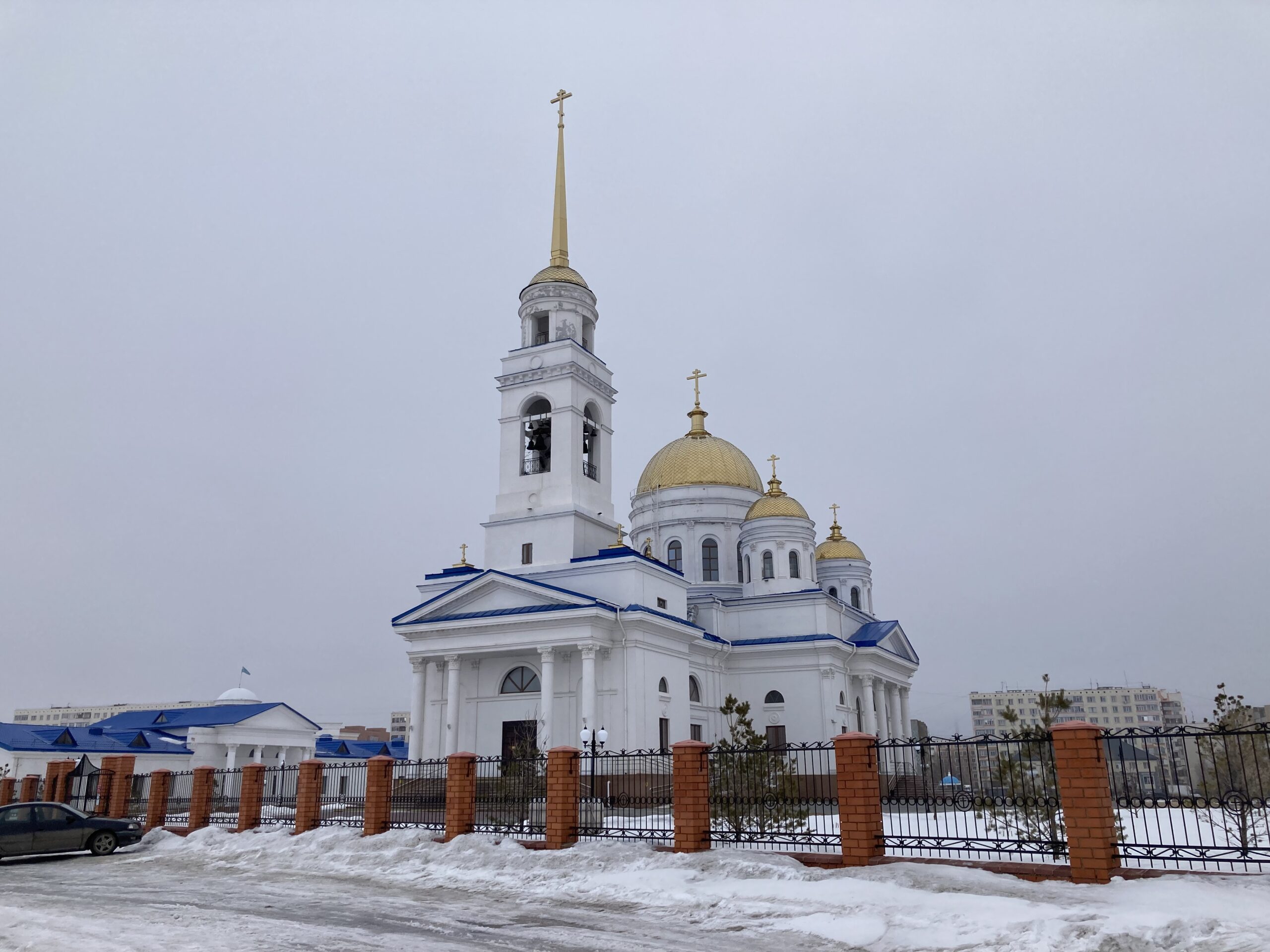
Kokshetau, the capital of Kazakhstan’s Akmola region, is a small town. Nevertheless, it is home to an incredible range of people, anyone from Russians to Poles, and from Kazakhs to Germans can be found here living in apparent harmony. This tapestry of people results in a lot of different places of worship, like this beautiful Church of the Resurrection of Christ. The photo does not do it justice, because other than arriving at the city at the wrong month to see its lake in all its glory, I also happened to be there on the worst day possible when sun was nowhere to be seen for the most of the day.
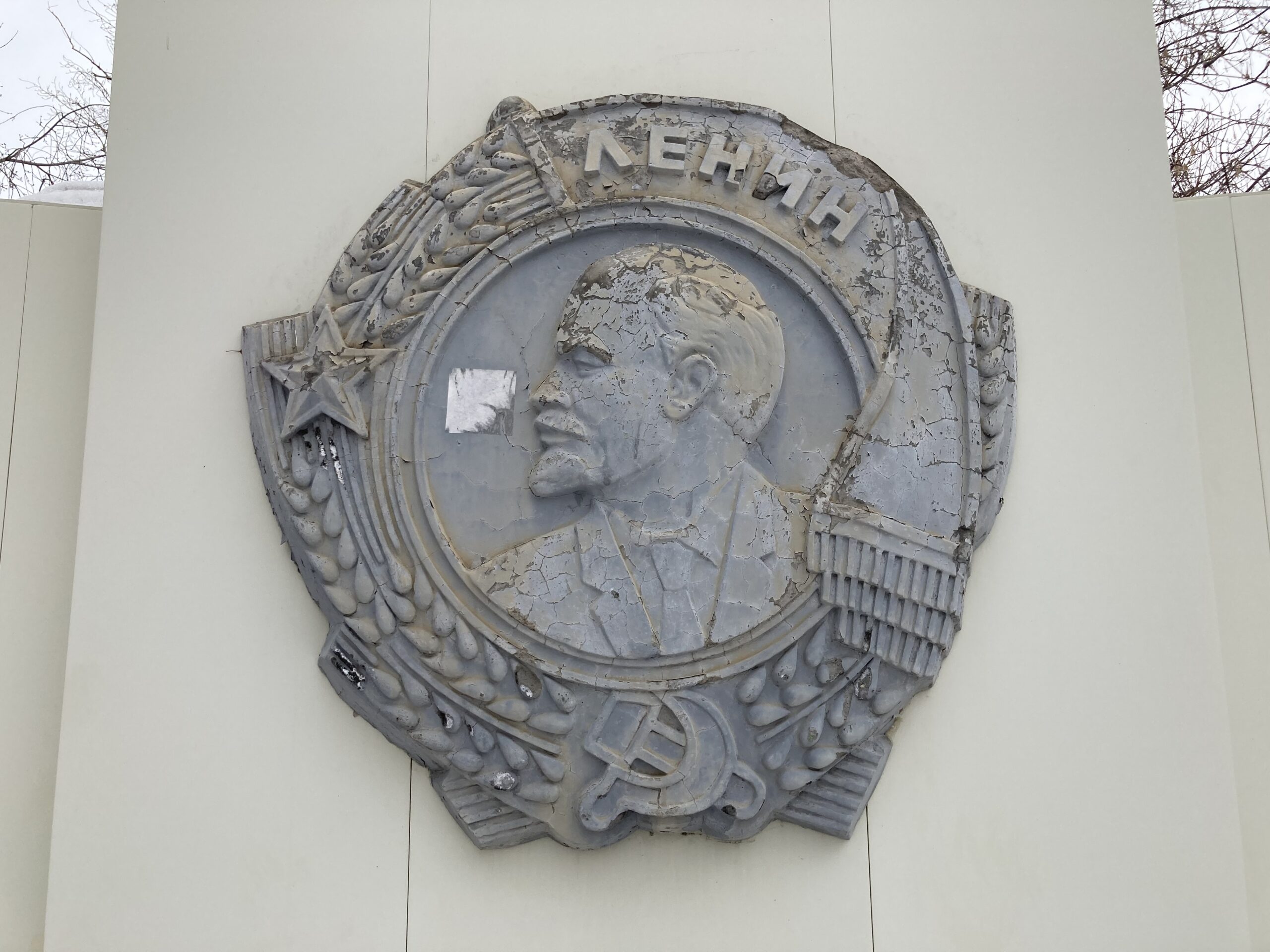
The lack of sun did not do much to dampen my spirit for exploration. In fact, I prefer it that way. It is just the way all these photos came out that troubled me a bit. With that being said, this gloomy filter of sunless skies actually helps with one kind of photography, one involving old Soviet artifacts. A stone’s throw away from city’s local history museum and its theatre, one can find this amazing Soviet-era plaque, awarded to the city for its industry.
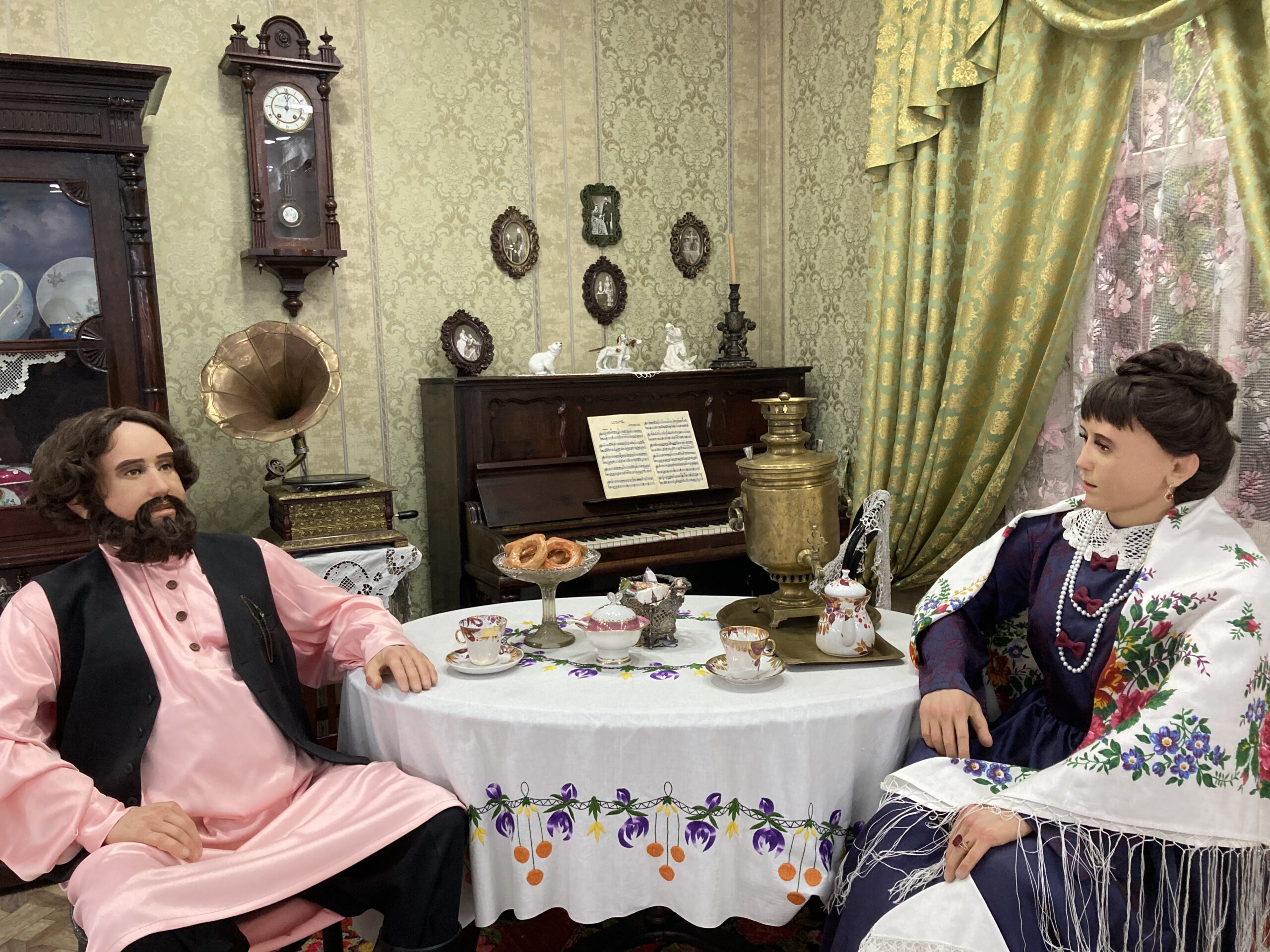
That industry, at least nowadays, is all about mining, anything from gold to uranium to be more exact. Since the area is rich in minerals and in other valuables, you can see that despite its unassuming size and location, there is a bit more to it than it meets the eye. For example, its museums are full of perfect trilingual texts to describe all that they have on display, something that is extremely rare even in Astana or Almaty. There seems to be more foreigners here than I first anticipated, expats working at these mining industries, and students who come from Southeast Asia to try their chances here. That must be why city’s local history museum was full of high-quality displays with perfectly translated English texts that accompany them.
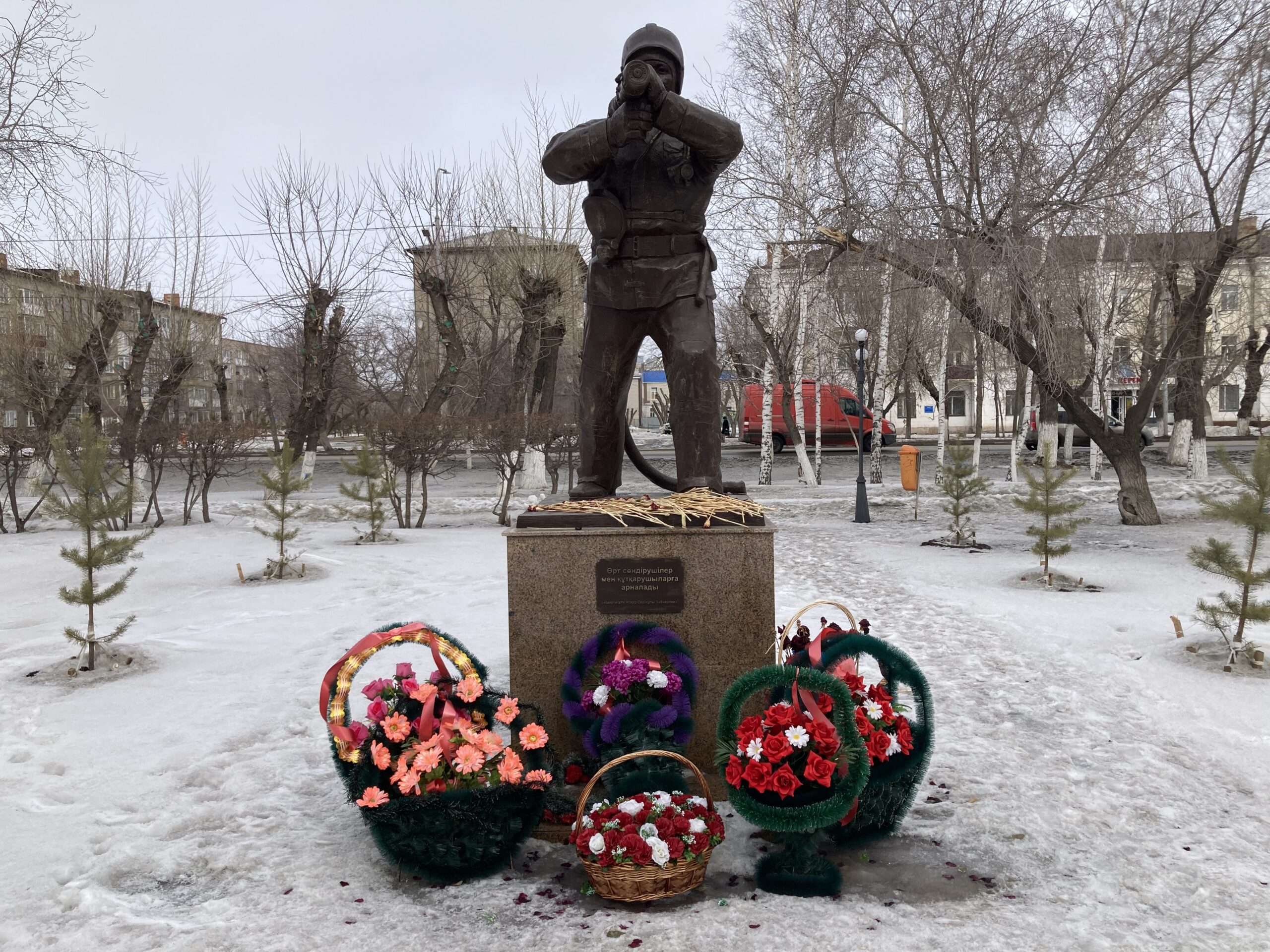
I chanced upon this statue dedicated to firefighters on my way out of the museum. Thinking back to my time in Turkey, I realized that we hardly have any such public displays dedicated to any specific profession. It is not like this is very common in ex-USSR countries, but it sure seems rather common.
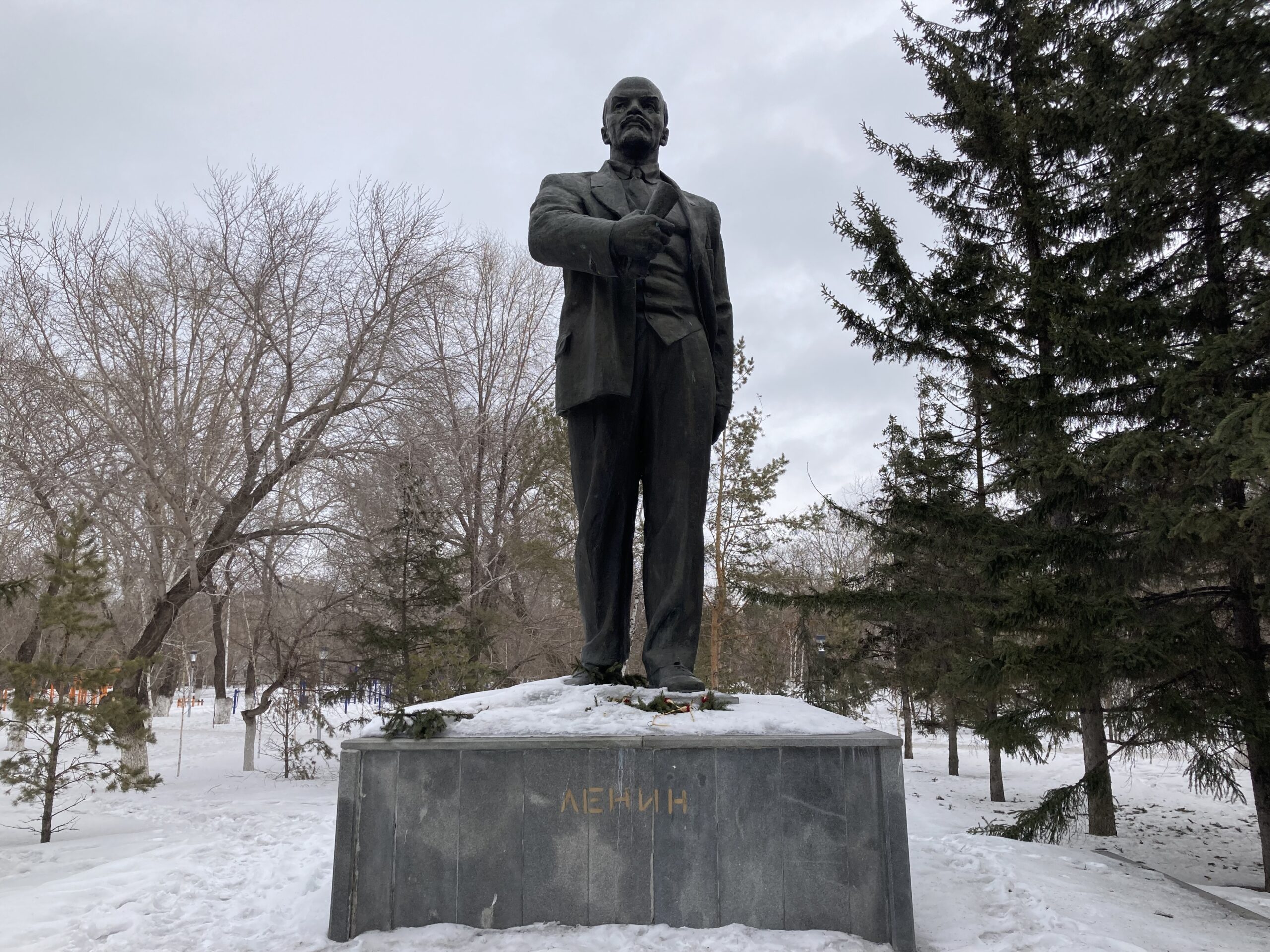
It was yet another statue that brought me to this part of the central park though, one of Lenin. According to my research online, this must have been the last Lenin that I did not see in Kazakhstan. Feeling fulfilled with that accomplishment (which would later be proven untrue) and quite fascinated by the care shown to it (even some of the flowers were fresh) I hummed around as I merrily made my way to a nearby restaurant for lunch.
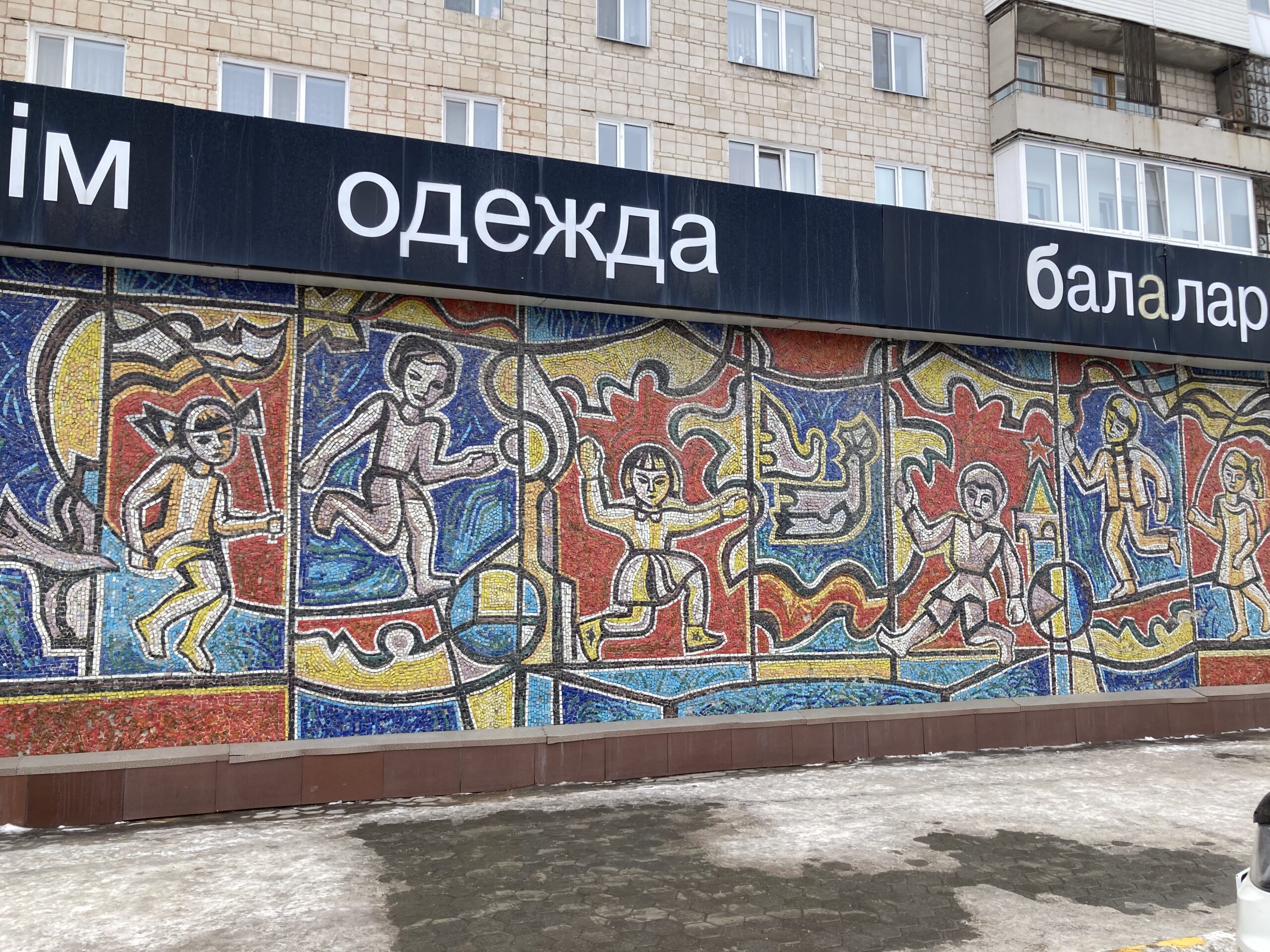
Kokshetau kept its Soviet spirit alive, not necessarily vivid, but alive, nonetheless. Some of its mosaics are within the territory of schools, and are thus a bit difficult to photograph properly, some others are out on the open like this. Almost all mosaics I could find related to children in one way or another, which is an interesting point to add.
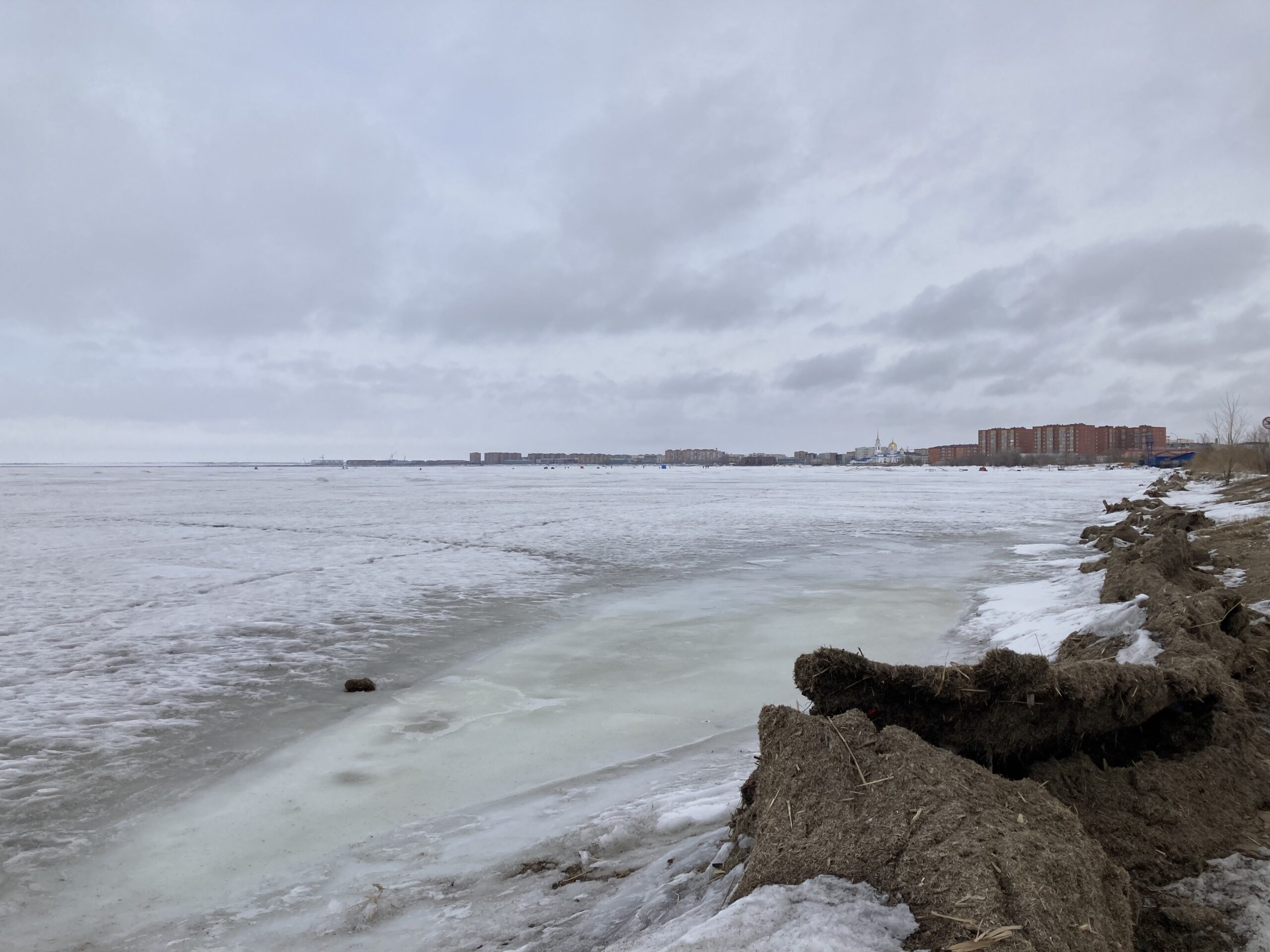
Remember how I mentioned this town having a lake, well, here you go, a lake… I know, it does not look like much by late March. I am sure it looks fascinating in summer. You can kind of make out the fishermen that camp on it far in the distance. It was an interesting display, though I would have preferred to see it in all of its thawed glory.
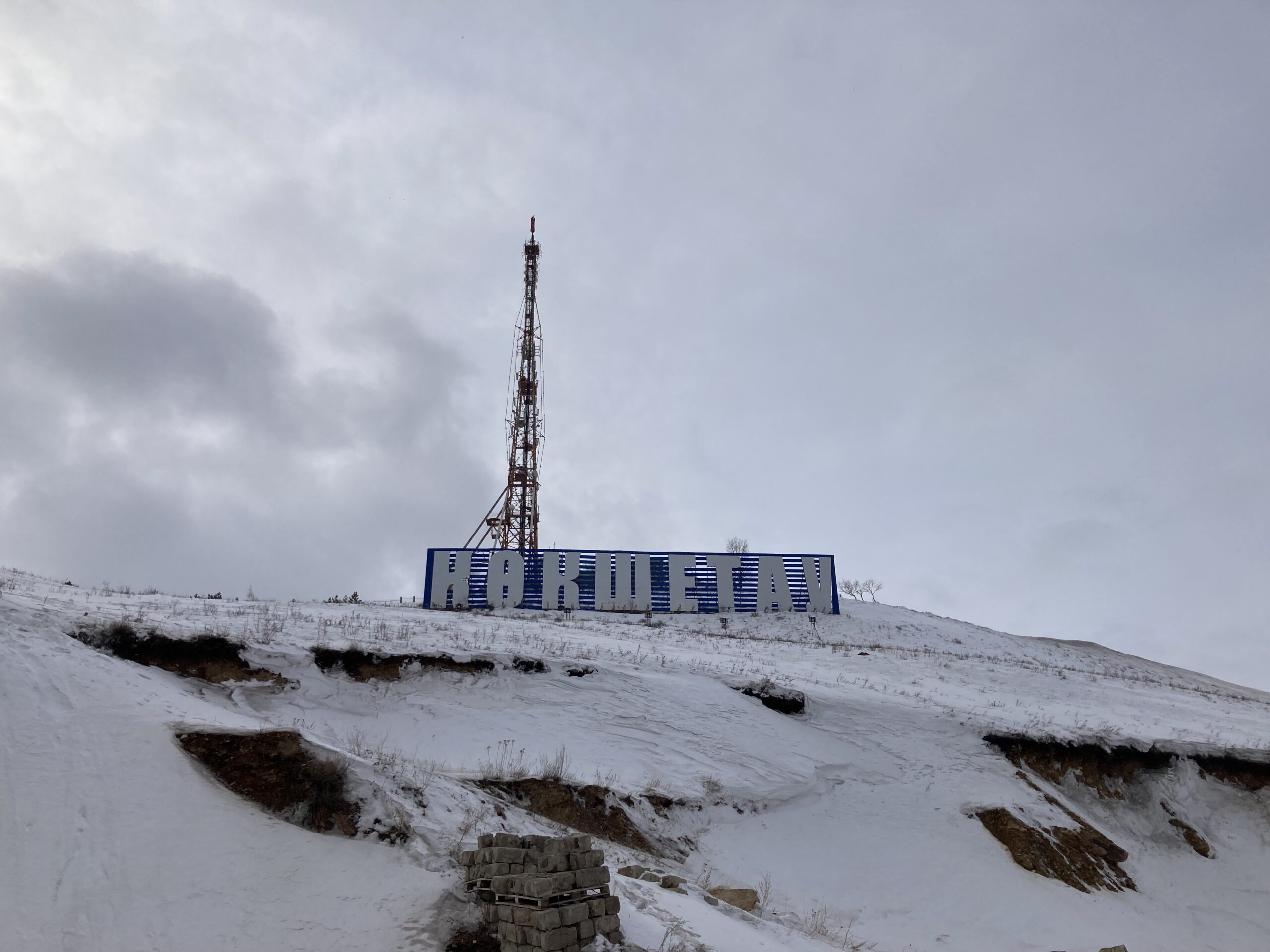
Unsatisfied with how the lake looked, I slowly made my way to the city’s sign, one that certainly makes me want to insert many Hollywood jokes here. Refraining from doing so, I made my way further uphill.
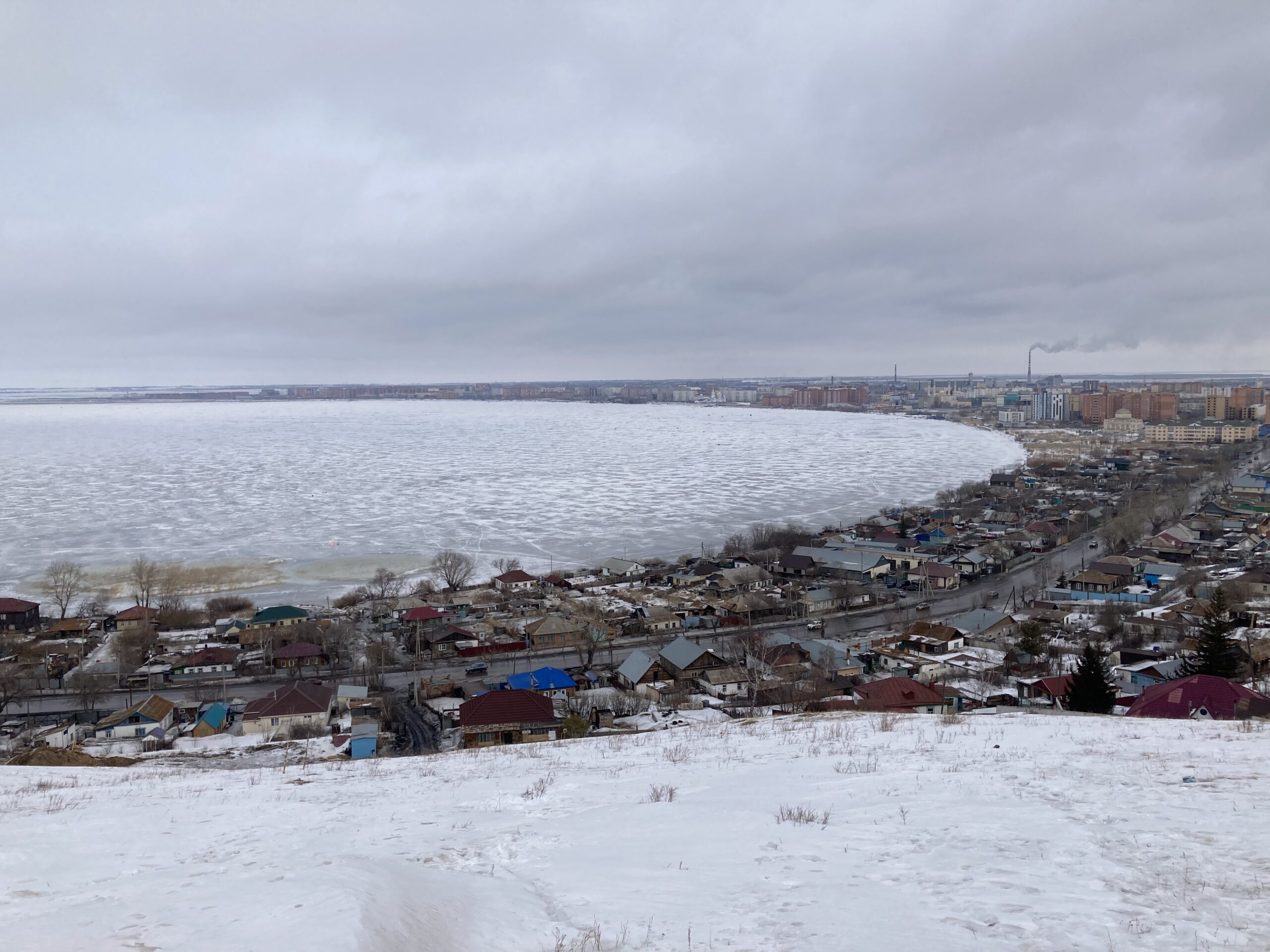
Well, if you go near the pseudo-Hollywood sign, you can actually get a pretty good look at the city below you. This is just a short hill, so do not have very high expectations, but still, you can see all the important bits from up here. The frozen lake too looks much better than how it did down below.
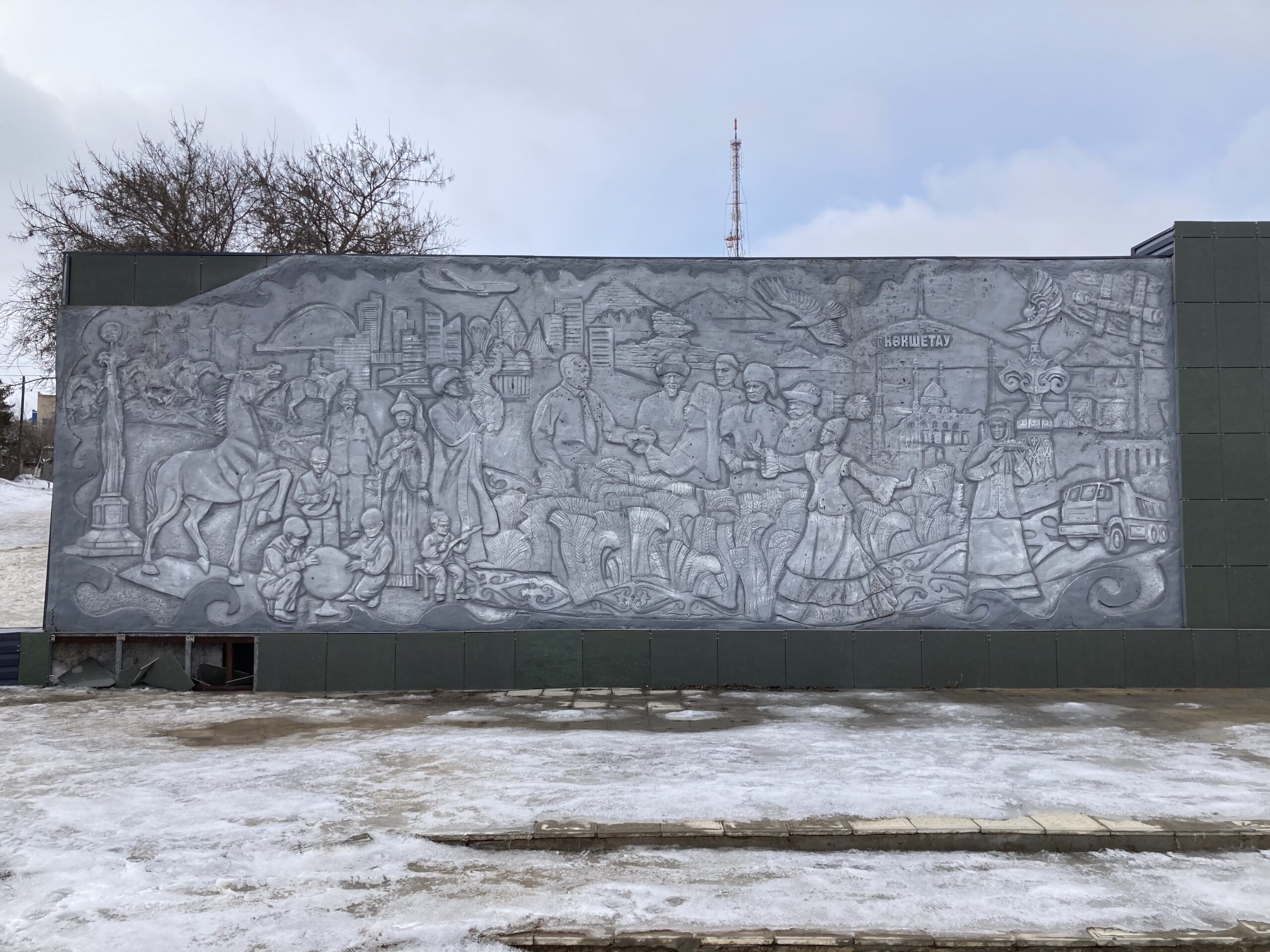
On my way back down from the hill, I came across this post-Soviet mural, one dedicated to Nursultan Nazarbayev’s rule during the first three decades of Kazakhstan’s statehood. You can see him receiving something from a lady in the middle. What stood out to me was just how poorly maintained this whole area was. This was in stark contrast to all the Soviet goodies that we have seen so far, and will see very soon.
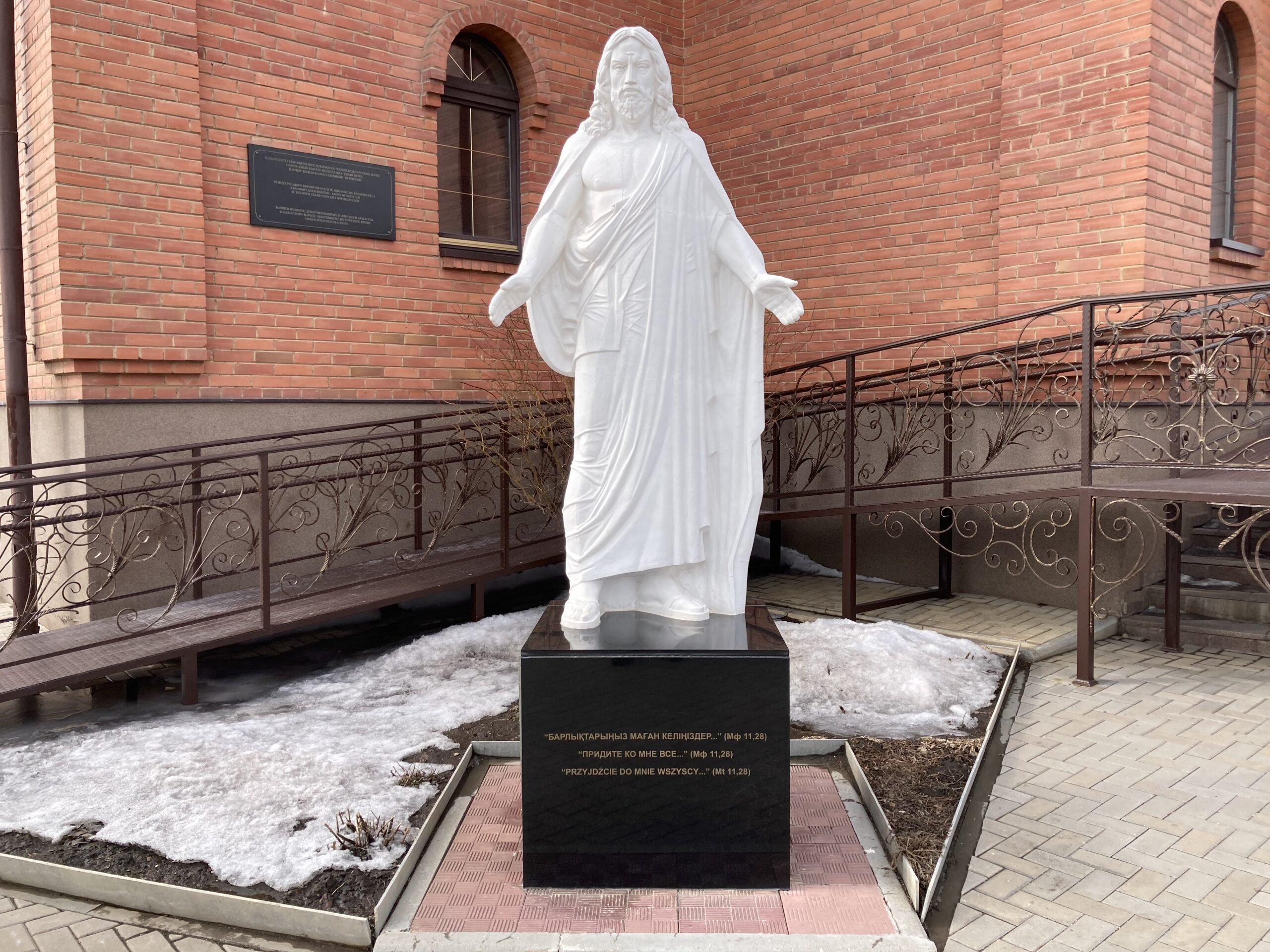
A few hundred meters away from there one can find Church of St. Anthony of Padua, a Catholic church in the middle of Kazakh steppes. Well, we have Stalin to “thanks” for that. Mostly due to deportations of various peoples under his reign, a lot of unexpected groups, such as Catholic Poles, found their way to Kazakhstan. That is why these churches, though still a rarity, are a part of the urban environment here.
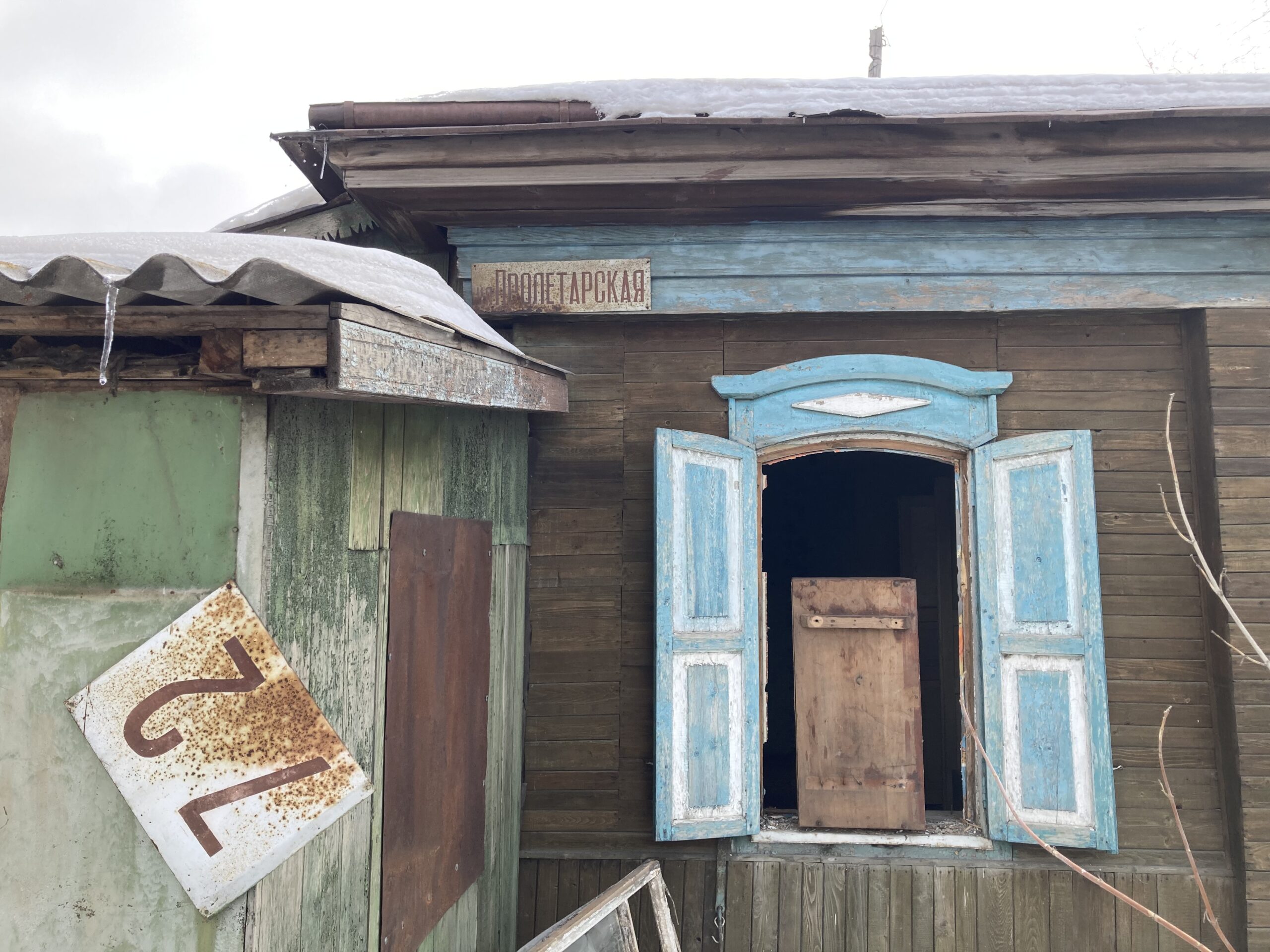
Speaking of urban environment, the one in Kokshetau, though orderly, seems to be in decay the further away one gets from the city center. Some of the older houses are now abandoned. Old Soviet street signs seems to have outlived the inhabitants of these houses at times.
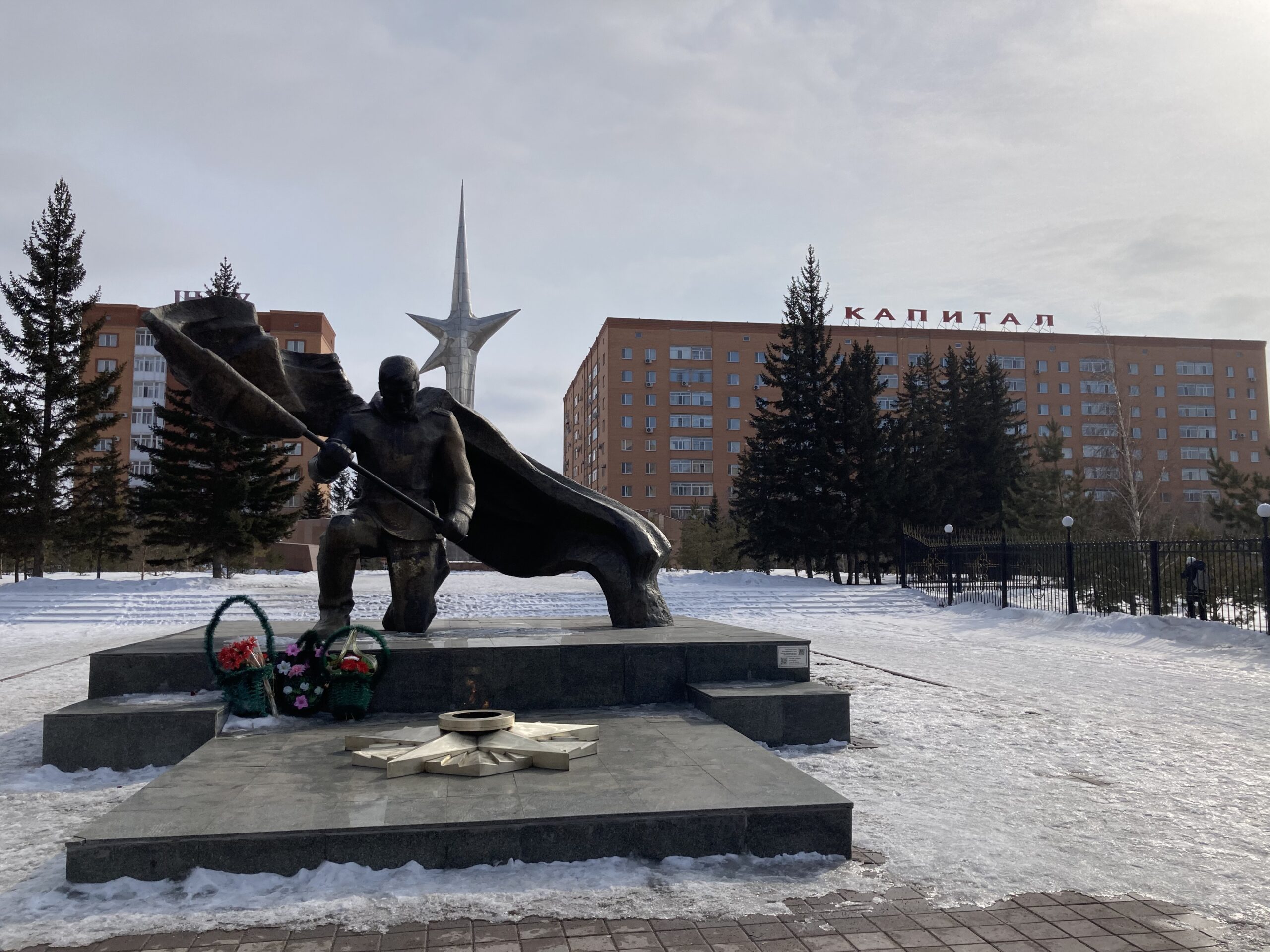
My walk eventually got me to the city’s very own eternal flame. This one was especially memorable, as it had the words “Capital” written right atop the apartment block behind it. Finding some fresh flowers here was a nice touch too. For all intents and purposes, this place teleports you to a reality you may only be familiar with from old Soviet flicks, one that does not exist anymore.
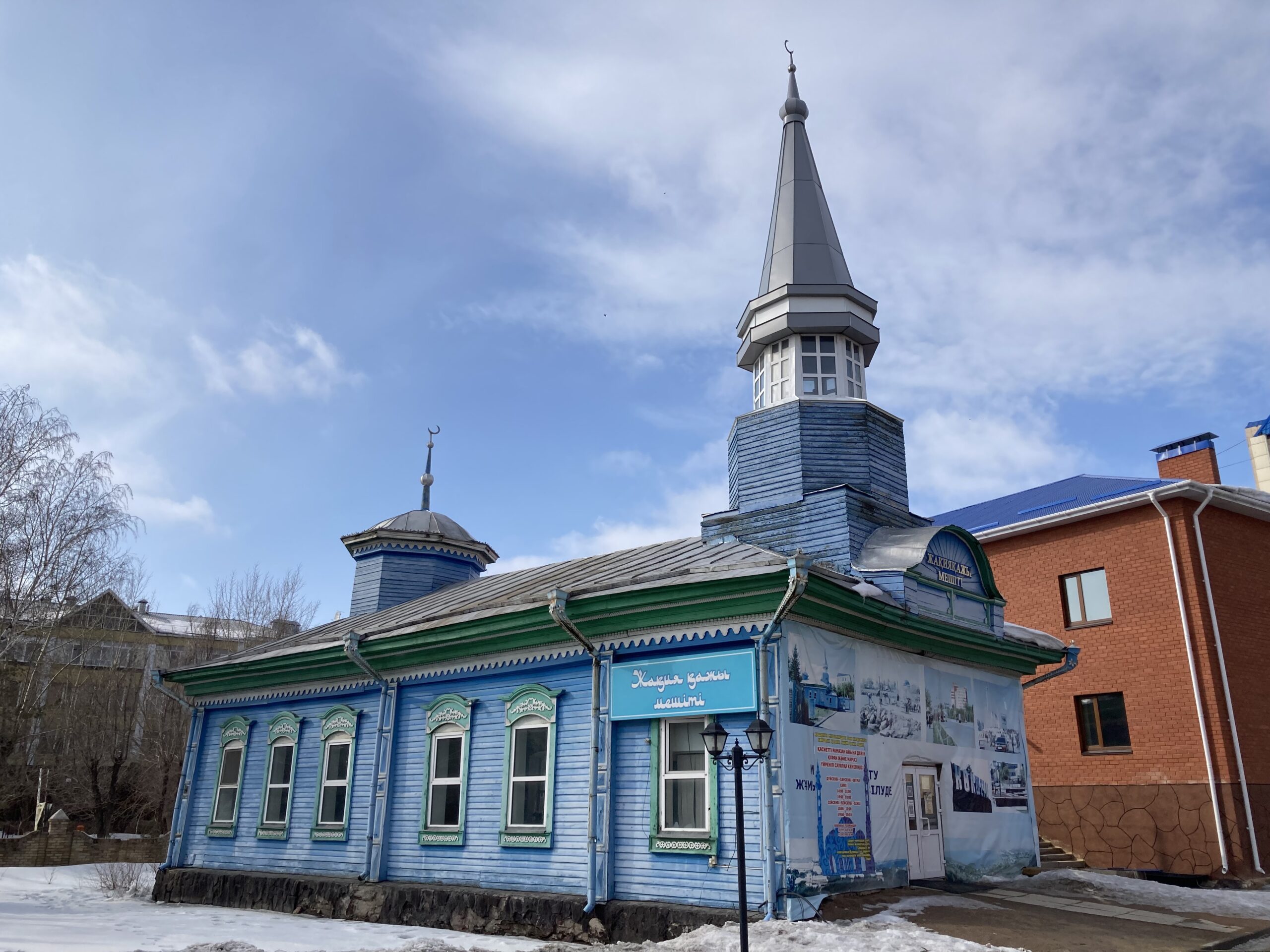
What teleports you even further away in time is this wonderful Tatar mosque that is just a few hundred meters away from the aforementioned eternal flame. The Jahiya Haji Mosque reminded me of the ones I found in Semey, though honestly Semey has more of them, and they are admittedly of a higher quality too.
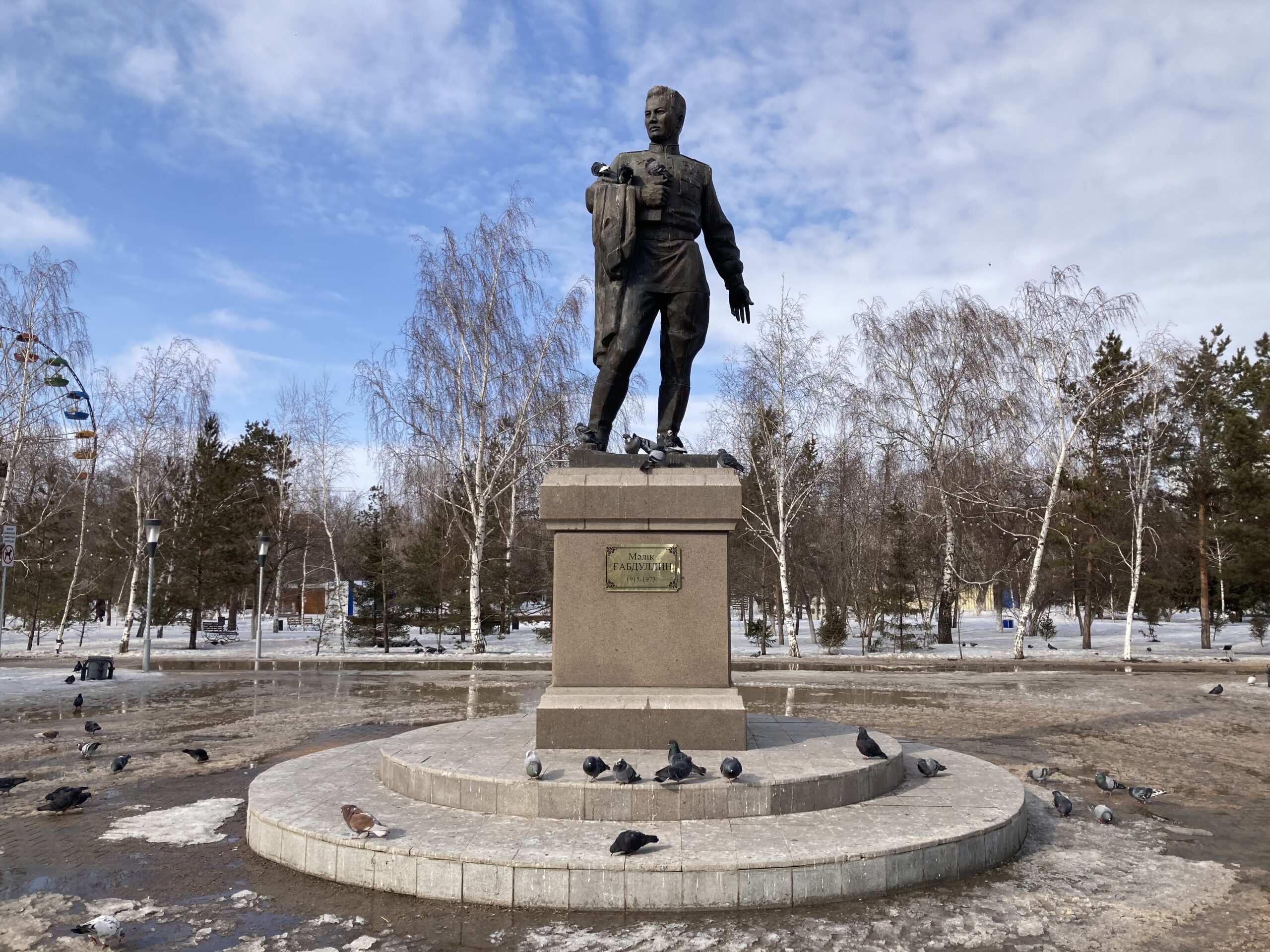
As the day came to an end, sun started to show its face a bit, letting me take a few photos like this. A statue of Malik Gabdullin, a hero of the Soviet Union, could be found in city’s central park as well. Weirdly, I had missed it earlier on in the day. Perhaps I do need some sunlight to see clearly after all…
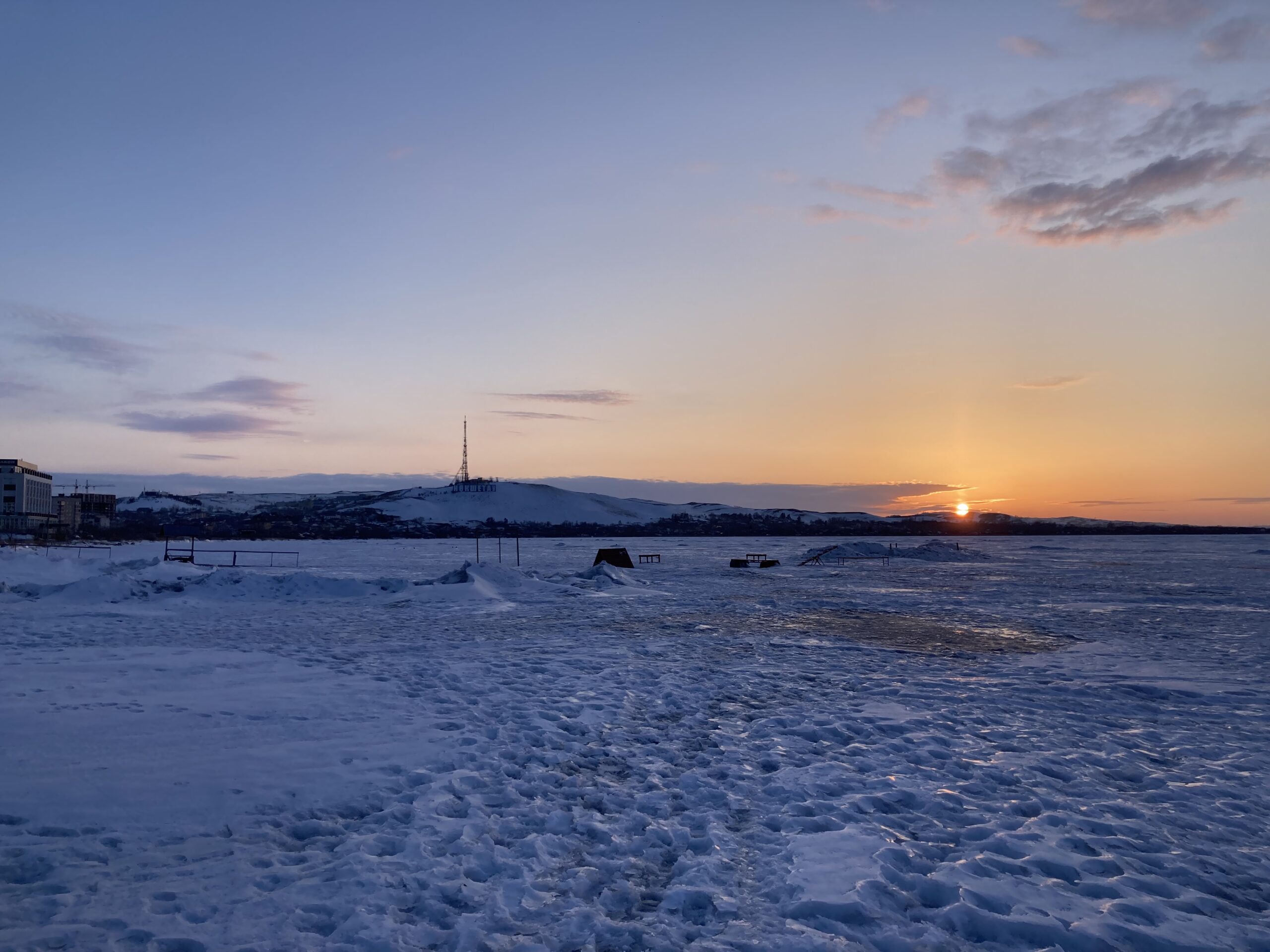
Frankly, by that point, I was not interested in any statues or memorials anymore. I was interested in something more natural. Since sun was out there, it means that I could finally watch the sunset over Kokshetau’s lake, something I was told to do by many. Well, lake was, once again, not really there. However, sunset itself was beautiful, nonetheless. It does set behind some hills and not the actual lake itself anyways, so the frozen lake did little to actually spoil this memory for me.
I left Kokshetau the next day, satisfied with what I have seen so far, but knowing very well that I must have visited it in summertime, when I could even sip my toes into its lake. Nevertheless, sometimes you are at the right place at the right time, and sometimes you are not. Suffice to say, despite going there at the wrong time, Kokshetau offered enough to keep me satisfied, and it even spoiled me a bit with its dining scene. Come back next week to read all about that!
